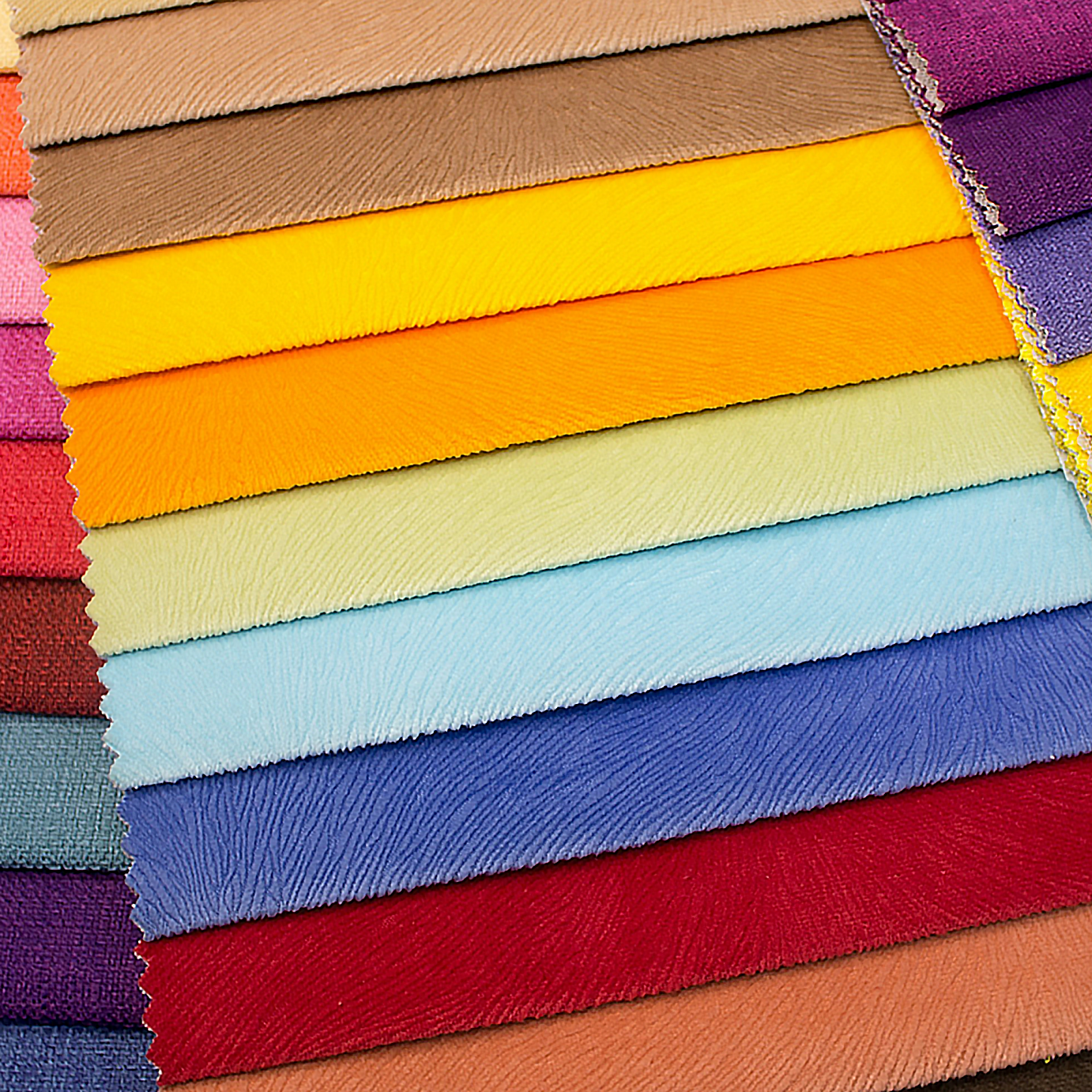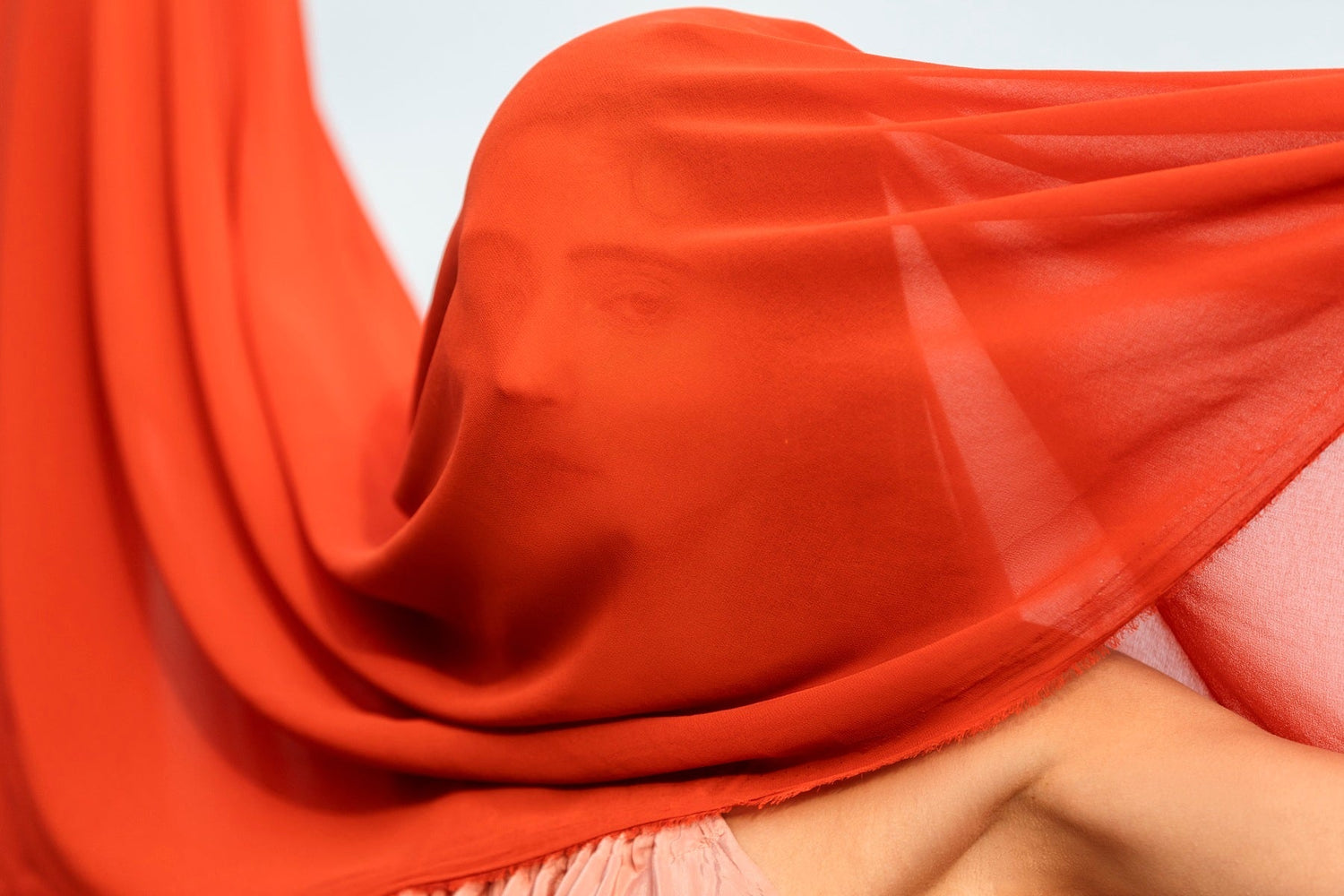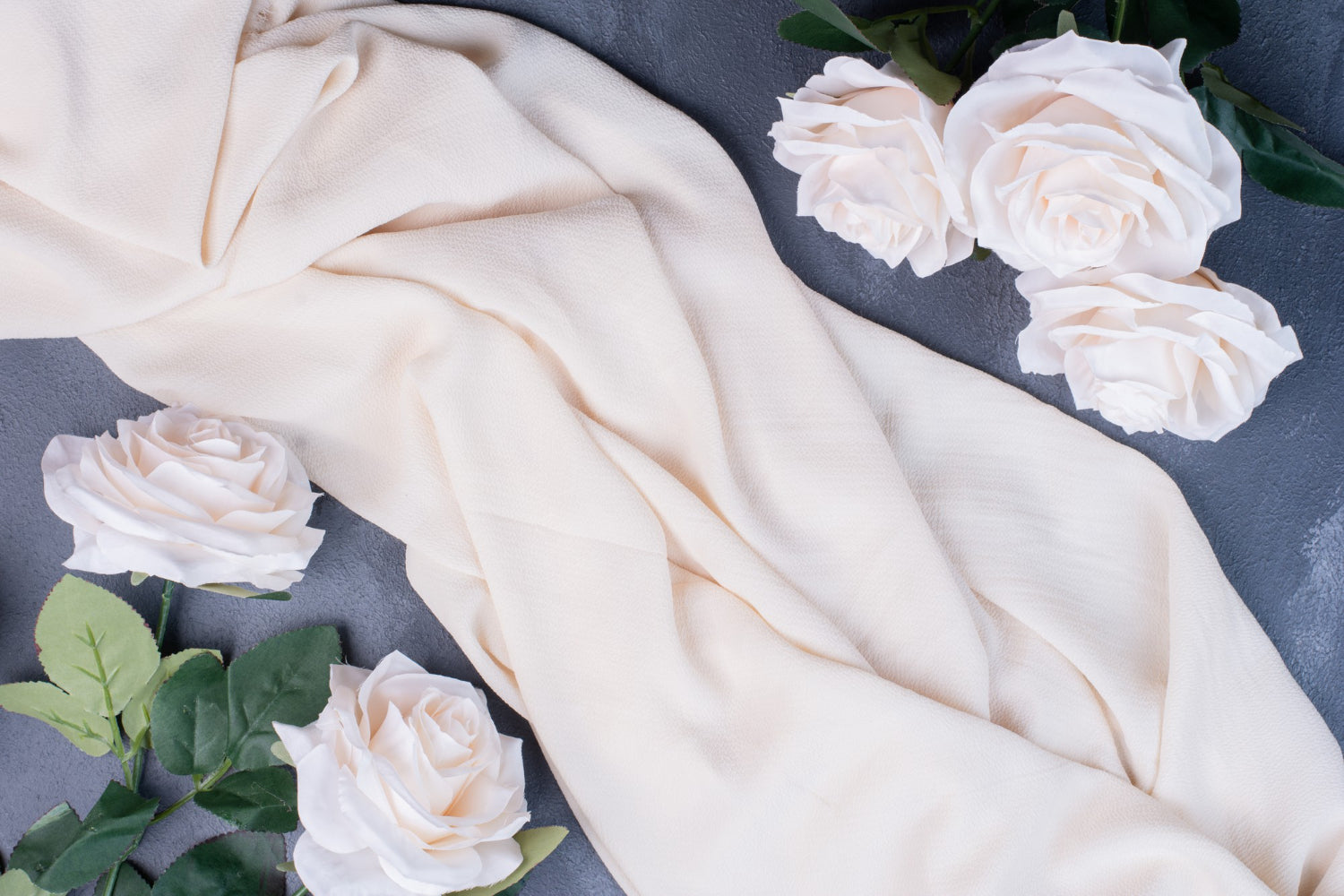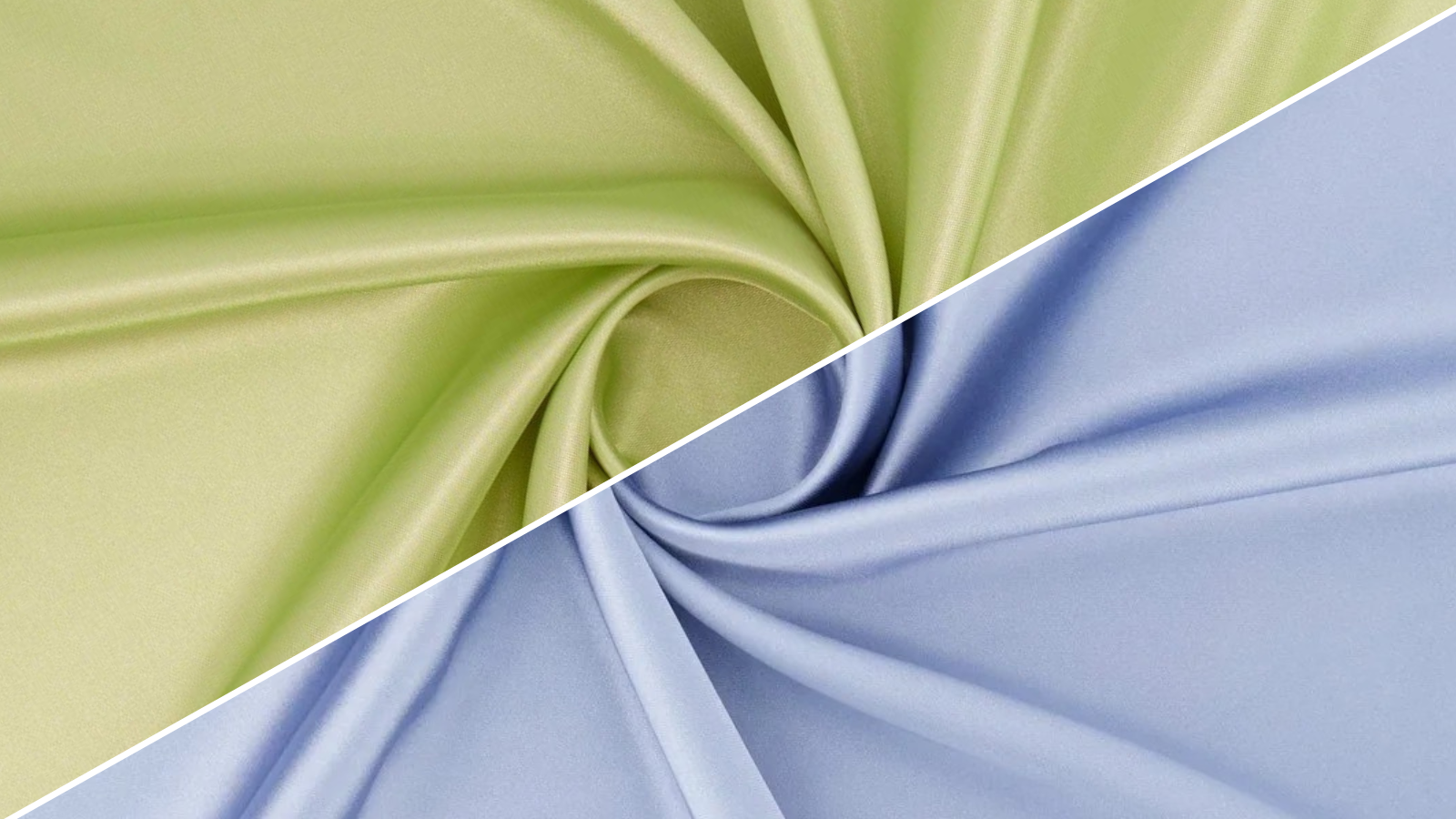Choosing the right fabric doesn’t just affect how a dress looks; it shapes how it moves, how it feels, and how confidently you wear it. In the past, you might have discovered this in a fitting room. These days, with so much shopping done online, the chance to touch the material before you buy is often gone. Understanding the fabric, how it drapes, how it reacts to light, and how it holds its shape can save you from buying something that looks great on the hanger but doesn’t feel right when it’s on your body.
The fabric is the first thing you notice, even if you don’t realize it. It affects how a dress moves, how it feels when you wear it, and how well it holds up through the day. Whether you're getting ready for a wedding, a formal event, or something more laid-back, the right fabric can make all the difference. Chiffon and crepe fabrics are both lightweight, but they’re nothing alike. One is floaty and sheer. The other has more texture and structure. Silk blends change the feel even more, adding softness or shine depending on how they’re woven. If you’ve ever wondered which fabric fits your style or suits the moment best, this guide can help you decide.
The Key Characteristics of Each Fabric
Crepe doesn’t float the way chiffon does. It hangs lower, with more shape, which gives it structure. You’ll often see it in blouses, sleek skirts, or dresses that are meant to hold their shape. Most crepe fabric is made from silk, polyester, or a mix that gives it enough body to stay in place while still moving a little.
Chiffon: Sheer, Soft, and Elegant

Chiffon fabric is thin and airy. It's a bit rough when you run your fingers over it. It’s so sheer it nearly disappears in the light, which is why it works beautifully in chiffon dresses or layered wedding gowns. It drapes gently and creates that soft, romantic shape people love. Chiffon doesn’t offer much support, though. It’s best used when you want something that moves freely and feels light.
If you love that airy, romantic drape, skim chiffon fabric uses and benefits to see where it truly shines (and where it doesn’t).
Crepe: Textured, Matte, and Structured

Crepe feels dry and has a grainy, almost sandpaper-like texture, but it's much finer. That crinkle is what sets it apart. It helps the fabric keep its form. You’ll see it in blouses, midi skirts, and evening gowns that need clean lines and a little definition. It doesn’t float, and that’s the point. It holds its own, even in simpler designs.
For a deeper primer on weave, weight, and fiber blends, read what is crepe fabric so you know exactly which type will hold its shape for your design.
Silk Blends: Luxury in Texture and Drape
When silk is woven into chiffon or crepe, the difference is immediately noticeable. The fabric feels smoother, drapes more fluidly, and usually has a soft, natural glow. Silk chiffon still looks sheer and light, but it moves better and feels cooler against the skin. It’s often chosen for dresses that need to feel soft and romantic without losing that delicate appearance.
Silk crepe has a bit more structure. It still holds that dry, grainy feel you expect from crepe fabric, but the silk gives it a softer edge. The drape feels more relaxed, less crisp, more fluid. Then there’s crepe de chine, which is also made from silk. It’s smoother, with almost no crinkle, and works well for blouses or dresses that need movement without too much shine.
Of course, not all crepe or chiffon is made from natural fibers. Plenty of stores carry versions made from synthetic materials like polyester or nylon. They look similar, and they’re easier to care for, but they don’t quite feel the same. Real silk has that breathable quality and light sheen that synthetic blends can’t fully match. Sometimes, you really can tell just by touch.
For a silk-forward option with fluid movement and minimal crinkle, dive into crepe de chine fabric to understand how it differs from standard crepe.
Still unsure which fabric fits your style? Here’s how chiffon and crepe compare when it comes to look, feel, and function:
Texture
- Chiffon: Sheer with a somewhat rough feeling.
- Crepe: Grainy with a lightly crinkled surface.
Drape and Movement
- Chiffon: Tends to be light and floaty. It flows with every step.
- Crepe: Has a softer drape with more structure. Crepe holds its shape well.
Finish
- Chiffon: Has a Soft sheen and is semi-transparent.
- Crepe: Material is matte and more opaque than chiffon.
Feel on Skin
- Chiffon: Known for its airy, barely there feeling.
- Crepe: Slightly textured, but still very comfortable.
Ideal Use
- Chiffon: Perfect for layered gowns, overlays, and flowing dresses.
- Crepe: Great for tailored pieces like blouses, midi skirts, and sleek formal wear.
Occasions
- Chiffon: This material is Ideal for weddings, garden parties, or romantic evening wear.
- Crepe: Works well for cocktail events, formal receptions, and minimalist looks.
Climate Comfort
- Chiffon: It's breathable and lightweight, making it better for warm weather.
- Crepe: Tends to be slightly heavier. It's suitable for cooler months or indoor venues.
Pairings
- Chiffon: Works beautifully with satin for added depth and shine.
- Crepe: Looks great alone or blended with silk for a refined finish.
Where Are These Fabrics Used in Fashion?
You’ll see chiffon and crepe used everywhere from weddings to weekday dinners, but how they’re used depends a lot on the look and feel designers want to create.
Chiffon shows up most in wedding dresses, bridesmaid dresses, and soft flowing gowns. It’s the kind of fabric that moves when you walk. Chiffon is perfect for layers and volume without bulk. A lot of romantic-style dresses use chiffon and satin together: chiffon for that dreamy float, satin underneath for shine and shape. It works especially well in dresses that need to move with the body or catch the light.
Crepe leans more toward tailored looks. You’ll find it in clean, modern dress styles where shape takes precedence over movement. It hugs the form just enough without being clingy. Think minimalist formal wear, slimmer bridesmaid dresses, or even day-to-night outfits. It holds its own, so no fluff is needed.
Chiffon and crepe can tell two very different stories sometimes, even within the same dress. One is light and soft, made for movement and layering. The other is more grounded, with a natural structure that keeps its shape. That’s why you’ll see chiffon in bridesmaid gowns that billow as you walk, or layered over satin for extra dimension. Crepe works well when you want the fabric to follow the body, no float, just clean, elegant lines. It’s great for modern dress styles, especially in formal wear, where structure matters more than flow. Picking the right fabric changes everything. You feel it when you move, when you sit, even when you see the photos later.
How to Care for Chiffon and Crepe
These fabrics look amazing, but they don’t always love rough handling. If you want to keep your favorite chiffon dress or crepe blouse looking good, it helps to treat them gently, especially the silk ones.
Start with washing. Most of the time, hand washing is your safest bet. Use cold water and go easy on the soap. Skip the twisting or scrubbing to prevent damage. If it’s made from polyester, nylon, or another synthetic fiber, a gentle machine cycle might be okay, but only if the tag says so. For silk or anything sheer, stick to dry cleaning. Better safe than sorry.
As for ironing, keep the heat low. Always. You can slide a clean cotton towel over the fabric before pressing, just to be extra careful. Don’t hit it with steam directly, especially if it’s silk. That’s how you end up with water spots or shiny patches.
Storage depends a bit on the weight and cut. Light pieces usually do best on a hanger. But if the fabric is delicate or heavy (especially silk blends), fold it loosely and tuck some tissue between the folds. It helps keep the shape without leaving hard lines. And whatever you do, keep it out of direct sun; fading creeps in fast.
With a little careful handling, your favorite pieces will keep their polished look for years.
Final Thoughts: Choosing the Fabric That Moves with You
Some people fall in love with chiffon at first touch, while others dislike its sheer feel. You might like the structure of crepe one day, then find it too stiff the next. That’s the thing about fabric. It’s personal. It changes with the light, with the weather, with your mood.
Chiffon offers a soft, airy, and romantic feel, ideal for creating delicate silhouettes. Crepe provides more structure without adding weight, making it a versatile choice for garments that require definition. Introducing silk further elevates the experience — it’s smoother, cooler, and unmistakably refined. Crepe de chine sits comfortably between these options, blending lightness, texture, and fluidity for a balanced, elegant finish.
If you’re not sure what suits you, try swatching. Touch the fabric. Hold it up. Let it fall. Wear it around for a few minutes if you can. See how it wrinkles. See how it makes you feel. That matters.
If you’re shopping for a wedding dress, bridesmaid dresses, or anything that’s going to live in photos for years, don’t rush it. Test chiffon and satin together. Try layering. Ask questions and get to know the fabric.
At the end of the day, you don’t have to know all the terms or get it “right.” Just find the fabric that feels good when you move, and go from there.




